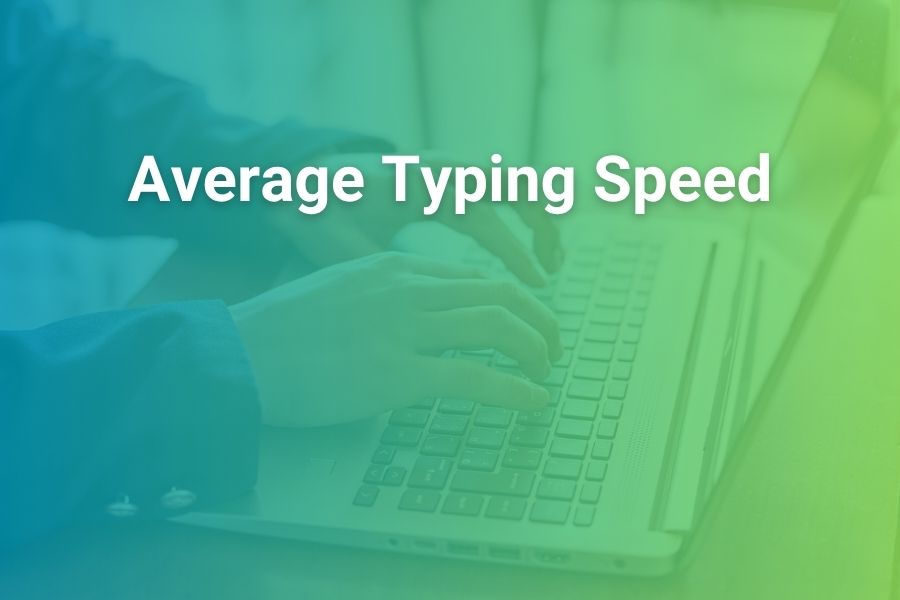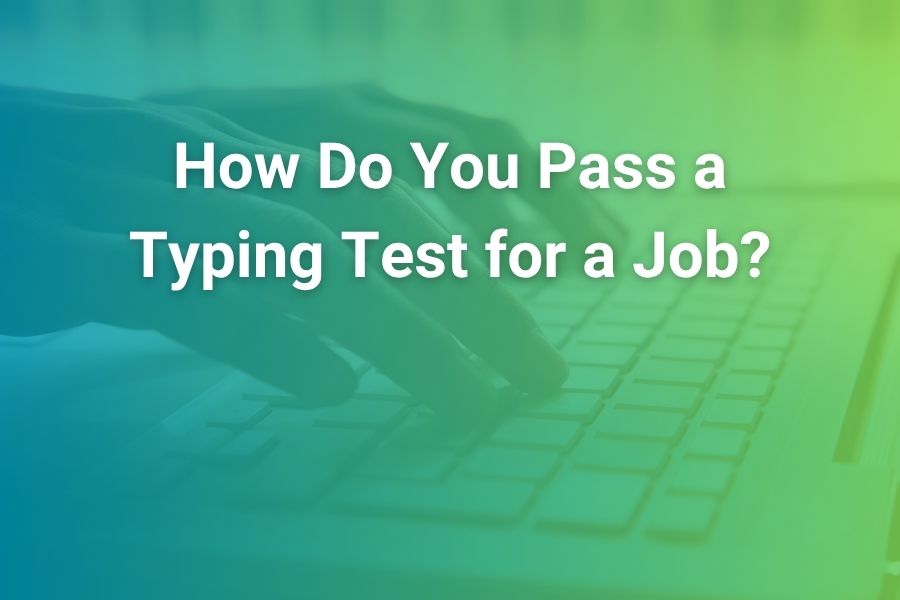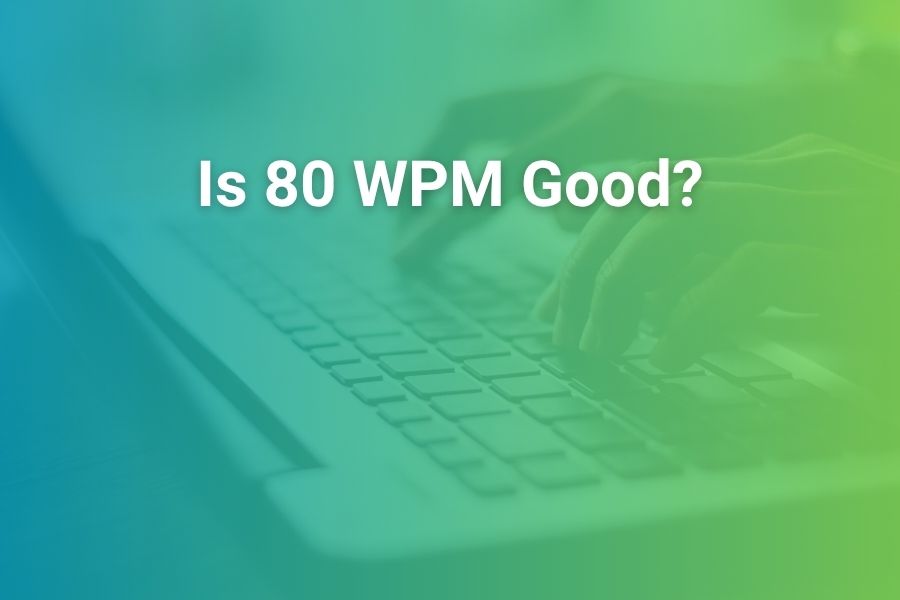
Everyone types, but few measure how fast and accurately they do it. “Average typing speed” sounds simple, yet context matters: device, task, accuracy, and job role all shift the target. The typical desktop user hovers around 40 words per minute (WPM). Ambitious professionals often aim for 65–70 WPM or more, because speed plus accuracy compounds productivity.
Mobility adds another layer: the typical smartphone user lands in the mid-30s WPM. In this article, you’ll learn the modern benchmarks, what “WPM” really means, how roles differ, why accuracy matters, and how to jump a tier fast—in this article.
What “Average Typing Speed” Actually Measures
WPM converts keystrokes into an easy number. Most standardized tests define one word as five keystrokes, including spaces and punctuation. That definition keeps tests consistent across languages and text types.
You should also track accuracy as a percent. Speed without accuracy equals rework, lost time, and bad communication. The most useful score pairs WPM with accuracy and shows errors you corrected and errors you missed.
The Real-World Averages in 2025
On a physical keyboard, the general computer user averages roughly 32–40 WPM when transcribing text. People who type daily for work usually sit higher. When you push technique—proper posture, home-row awareness, and consistent practice—hitting 65–70 WPM becomes realistic.
On phones, the average sits near the mid-30s WPM, with uncorrected error rates around a couple of percent for casual users. Those numbers shift with age, experience, and whether you correct errors as you go. The pattern holds: desktop beats mobile for speed, but modern mobile keyboards narrow the gap each year.
The Productivity Math That Makes Speed Matter
Think in minutes saved, not just WPM. A 200-word email takes five minutes at 40 WPM. At 20 WPM, it takes ten minutes. Multiply that difference by ten emails a day and you save close to an hour. Add chat replies, meeting notes, briefs, support tickets, and code comments.
Over a quarter, that extra hour per day becomes weeks of regained focus. Speed delivers compounding returns when accuracy keeps up. That is why high-leverage roles invest in keyboard proficiency like athletes invest in footwork.
How Accuracy Changes the Story
Accuracy determines whether your speed helps or hurts. If you fly at 90 WPM but carry a double-digit error rate, you push the work downstream into proofreading. Aim for 97–99% accuracy on professional writing. Many high-performing typists hold fast to a rule: do not accelerate until your accuracy sits at 95% or higher at the current speed. Fix technique, not only tempo. Your fingers should move less and hit more correct keys. That is how muscle memory forms.
Role-Based Benchmarks You Can Use
Different jobs stress different mixes of speed, accuracy, and multitasking. Use these 2024–2025 benchmarks as helpful targets:
- Administrative and executive support: 50–60+ WPM with high accuracy for calendar notes, emails, and documentation.
- Customer support and call centers: 60–80 WPM with focus on real-time accuracy in CRM tools.
- Data entry and transcription: 70–100 WPM with very high accuracy, since errors propagate to reports.
- Content, marketing, and journalism: 60–90 WPM plus strong proofreading to preserve brand voice.
- Software engineers: 40–70+ WPM effective speed when mixing code, symbols, and short prose; accuracy prevents syntax errors.
- General office roles: 50–70 WPM with clean formatting and minimal corrections.
- Graphic and product design: 40–60 WPM is often enough; the work mixes typing with visual tools.
These ranges reflect typical expectations. Your team’s tools and task mix may pull the targets up or down. The principle stands: raise speed to your tier, protect accuracy, then build endurance.
Desktop vs. Mobile: Why the Gap Persists
Hardware matters. Physical keys deliver tactile feedback and consistent spacing, which improves rhythm and reduces error. Mobile keyboards fight back with autocorrect and prediction, but thumbs travel farther and cover less surface.
You can still improve on mobile: enable haptic feedback, turn on key pop-ups for visual confirmation, keep nails short, and switch to swipe input when it suits. On desktop, invest in a layout and switch that feel right. You should not chase fads; you should chase comfort and consistency.
The Mechanics Behind Higher WPM
Your fingers accelerate when you reduce wasted motion. Focus on these mechanics:
- Hand position: anchor thumbs near the spacebar and float wrists; do not plant wrists and twist.
- Home row: return to ASDF and JKL; that habit centers your reach.
- Eye discipline: keep eyes on the text, not the keys. Looking down resets rhythm.
- Key travel: press firmly and release instantly. Don’t bottom-out every key with force.
- Breath and cadence: steady breathing helps maintain a metronome-like pace for long documents.
You cannot hack past fundamentals. You train them, then speed arrives.
The Hidden Accelerator: Text Expansion and Shortcuts
Raw WPM matters, but you can type “faster than fast” by typing less. Use text expansion for standard phrases, signatures, and canned responses. Map hotkeys for your most used commands—bold, italics, headings, and links.
Learn OS-level navigation: jump to the start or end of a line, hop by word, switch apps, and paste as plain text. Those micro-saves stack. Many professionals recover a full workday each month from shortcut fluency alone.
Measuring Your True Baseline
Do not rely on a single test. Take three short tests (1–2 minutes each) and one long test (5 minutes). Record WPM, accuracy, and uncorrected errors. Average them. Your short tests reveal peak speed. Your long test shows endurance.
Test weekly for four weeks. You will see a curve: quick gains in week one, a plateau in week two, and renewed growth in weeks three and four as technique locks in. Improvement feels uneven. The logs prove progress.
A 30-Day Plan to Jump a Speed Tier
Day 1–3: Audit technique. Sit tall, relax shoulders, and position the keyboard so elbows bend near 90 degrees. Relearn the home row. Run slow drills that force correct finger travel. Focus on accuracy.
Day 4–7: Add structured practice. Warm up with 3 minutes of easy text at 90–95% accuracy. Then run intervals: 30 seconds fast, 60 seconds stable, repeat five times. Cool down with 2 minutes of clean typing.
Day 8–14: Install text expansion and map shortcuts. Practice switching windows without the mouse. Time a daily task and write the before/after.
Day 15–21: Push endurance. Complete one 5-minute transcription at a pace you can hold above 96% accuracy. Log posture notes and any discomfort.
Day 22–30: Add real-world drills. Compose three emails from scratch under time limits. Summarize a meeting in three minutes. Type a paragraph from notes, not verbatim text, to simulate thinking while typing.
Keep sessions short and frequent. Ten minutes daily beats one marathon session. The habit builds the skill.
When You Already Type Fast—But Hit Ceilings
Fast typists hit plateaus for three reasons. First, they push speed before accuracy, so errors climb and confidence dips. Solve that by running “accuracy-only” days where you deliberately type 10–15 WPM slower and squash errors.
Second, they fatigue. Solve that by relaxing shoulders, adjusting screen height, and taking micro-breaks every 20–30 minutes. Third, they stall on vocabulary. Solve that by practicing with domain-specific texts: code, legal language, medical terms, or brand voice copy. Precision comes from familiarity.
Ergonomics That Pay for Themselves
Your body enables your WPM. Raise your monitor so the top of the screen sits at or slightly below eye level. Keep the keyboard near elbow height. Use a chair that supports a neutral spine.
Breaks matter: every 25 minutes, look 20 feet away for 20 seconds to relax eyes. If your forearms ache, lower your desk or raise your chair. If your shoulders tense, move the keyboard closer. Comfort compounds into speed and accuracy for entire workdays.
Advanced Input Systems and What They Mean for You
Specialized systems exist. Court reporters using stenotype routinely exceed 200 WPM and have recorded speeds near 360 WPM with high accuracy. That proves a principle: intelligent layouts that reduce finger travel can dramatically raise throughput.
You do not need a steno machine for office work, but you can borrow the lesson. Trim motion. Standardize reaches. Use consistent finger-to-key mapping. You will feel smoother at any speed.
How Managers Should Interpret WPM
WPM informs hiring for keyboard-heavy roles, but context wins. A support representative who types 70 WPM and writes clear, friendly sentences beats a 90 WPM rep who sends rushed, error-filled replies. Treat WPM like a vital sign, not the whole diagnosis.
Test with real tasks: a short email, a CRM note, a summary of a customer call, or a quick product description. Score speed and clarity together. Provide coaching and the right tools. Expect measurable gains within weeks when employees practice with purpose.
Training New Teams: A Playbook
Onboard with a simple curriculum. Teach home-row fundamentals on day one. Day two, introduce text expansion templates for greetings, closings, and policy blurbs. Day three, map shortcuts for the core apps and show how to navigate by keyboard.
In week one, ask every new hire to complete a timed email, a CRM note, and a two-minute summary. Review together. Praise accuracy and tone first. Push speed only after quality looks strong. That sequence sets the culture: write well, then write fast.
Benchmarks You Can Put on the Wall
For 2025, these targets fit a U.S. office environment:
- New hires in general roles: 45–55 WPM at 97% accuracy within 30 days.
- Customer support and ops: 60–80 WPM at 97–99% accuracy for live channels.
- Data entry and transcription: 70–100 WPM with extremely low error tolerance.
- Content and marketing: 60–90 WPM plus excellent grammar and brand consistency.
- Developers and technical staff: 40–70+ WPM sustained while thinking and debugging.
Use them to set goals, not to gate talent. Provide training and a runway to reach the tier.
Common Myths That Slow Improvement
“My hands are too big or small.” Hand size changes feel, not potential. Correct mapping always wins.
“I must stare at the keyboard.” You may peek while learning positions, but you must lift your eyes as soon as you can.
“Speed first, accuracy later.” That order engrains the wrong motions. Accuracy builds the blueprint. Speed follows.
“Only long practices work.” Five focused minutes daily beats a weekend binge.
“A fancy keyboard will fix me.” Comfort helps, but technique delivers the real gains.
Your Personal Path From Average to Excellent
Start where you are. If you sit at 35–40 WPM, chase 50 with 97% accuracy. That single jump transforms your day. From 50, push 65–70 with smart intervals and clean technique. Layer in text expansion for signatures, addresses, product links, and policy lines.
Learn the ten shortcuts you use hourly. Schedule a weekly five-minute test to track endurance. Keep a simple log with date, WPM, accuracy, and one note on posture. Celebrate small wins. You will feel the compound effect in your inbox, your notes, and your focus.
A Quick Buyer’s Guide for Keyboards and Layouts
You do not need expensive gear to improve, but you should pick tools you like. Try a few switch types if you can: some prefer crisp tactile bumps, others prefer smooth linear travel. Choose a layout with full-size arrow keys if you navigate documents often.
If your desk sits high, consider a low-profile board to reduce wrist extension. Wrist rests help some people; others prefer floating. The right choice keeps hands relaxed and encourages light, fast taps.
How to Coach Yourself Like a Pro
Set a weekly theme: accuracy week, endurance week, or speed week. In accuracy week, cap your speed and chase near-perfect text. In endurance week, hold a steady pace for five minutes without form breakdown. In speed week, run intervals and accept short bursts of controlled chaos. Film your hands once. You will spot wasted reaches and a heavy spacebar thumb. Fix one habit at a time. Use checklists to end sessions: shoulders relaxed, wrists neutral, eyes forward, breathing calm.
From “Average” to “Asset” in Thirty Days
Average typing speed keeps you afloat. Above-average typing speed turns your keyboard into leverage. You clear inboxes faster. You capture meeting notes in real time. You write cleaner documentation because you do not dread the task. Managers notice the throughput and clarity. Teammates trust your updates.
Clients feel the difference in response time and tone. Mastery here doesn’t require talent. It rewards intention, structure, and repetition. Start today. A month from now, your numbers—and your workday—will look different.
Conclusion
Know your baseline. Train technique before tempo. Protect accuracy like revenue. Add text expansion and shortcuts to multiply gains. Use role-specific targets to set expectations. Test weekly and log results.
In 2025, the typical desktop user still sits near 40 WPM, while strong professionals cruise at 65–70 WPM with high accuracy. That gap is your opportunity. You can close it with a plan, ten minutes a day, and the discipline to practice right.






